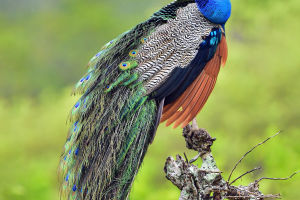The Arctic fox, a diminutive yet captivating creature, is renowned for its exquisite fur and playful hunting antics. Typically adorned in pristine white winter fur, the fox's coloration can vary due to genetic and seasonal factors.
Measuring between 50 to 60 cm in body length, with a tail spanning 20 to 25 cm, and weighing between 2.5 to 4 kg, the Arctic fox navigates the frigid landscapes of the tundra in the Arctic regions of the Northern Hemisphere.
Surviving in the challenging tundra environment requires exceptional adaptations, and the Arctic fox has evolved intriguing hunting behaviors. Using its keen front ears, the fox triangulates prey hidden beneath the snow. Upon detecting the sound of potential food, the fox leaps into the air, diving into the snow to capture its prey. Remarkably, the Arctic fox can hear lemmings under layers of snow ranging from 46 to 77 centimeters and identify seal dens buried under 150 centimeters of snow.
The Arctic fox's diet primarily consists of lemmings, supplemented by fish, birds, bird eggs, shellfish, Arctic rabbits, and berries. In a display of resourcefulness, the Arctic fox occasionally tailgates a polar bear, waiting for a post-meal opportunity. When polar bears consume the seal's fat layer and depart, hungry Arctic foxes may seize the chance for a meal, although this tactic carries risks, as a famished polar bear might resort to preying on an unsuspecting fox.
Scientists have revealed astonishing migratory patterns in Arctic foxes, covering an average of 90 kilometers daily for extended periods. Their migratory range extends from the Pacific to the Atlantic coast, akin to the east-west breadth of Canada. Studies indicate that Arctic foxes can navigate vast distances, leaving their winter nests, traveling up to 600 kilometers away, and returning home the subsequent summer.
Contrary to prior beliefs about foxes being highly social, recent observations unveil a nuanced degree of social behavior. March marks the estrus season for Arctic foxes, during which females exhibit distinctive behaviors like raising their heads, sitting, and singing to attract male counterparts. The gestation period lasts 51-52 days, yielding litters of 6 to 8 young. Within fox groups, a strict hierarchy among vixens prevails, with one dominant over the others, and shared territories among group members exhibit territoriality.
Arctic fox populations mirror the fluctuations in lemming populations. Typically, years with lower lemming numbers coincide with peak Arctic fox populations. This dynamic relationship underscores the intricate ecological balance in the Arctic.
With a molting cycle occurring twice annually, the Arctic fox showcases a remarkable transformation, donning a pristine, snow-white fur during the winter months and transitioning to a hue reminiscent of frozen soil as summer takes hold.
This remarkable creature, navigating the extremes of the Arctic, serves as a testament to nature's resilience and adaptation in the face of challenging environments. As we marvel at the Arctic fox's ability to thrive in such conditions, we are reminded of the delicate balance that sustains life in the world's most extreme landscapes.


